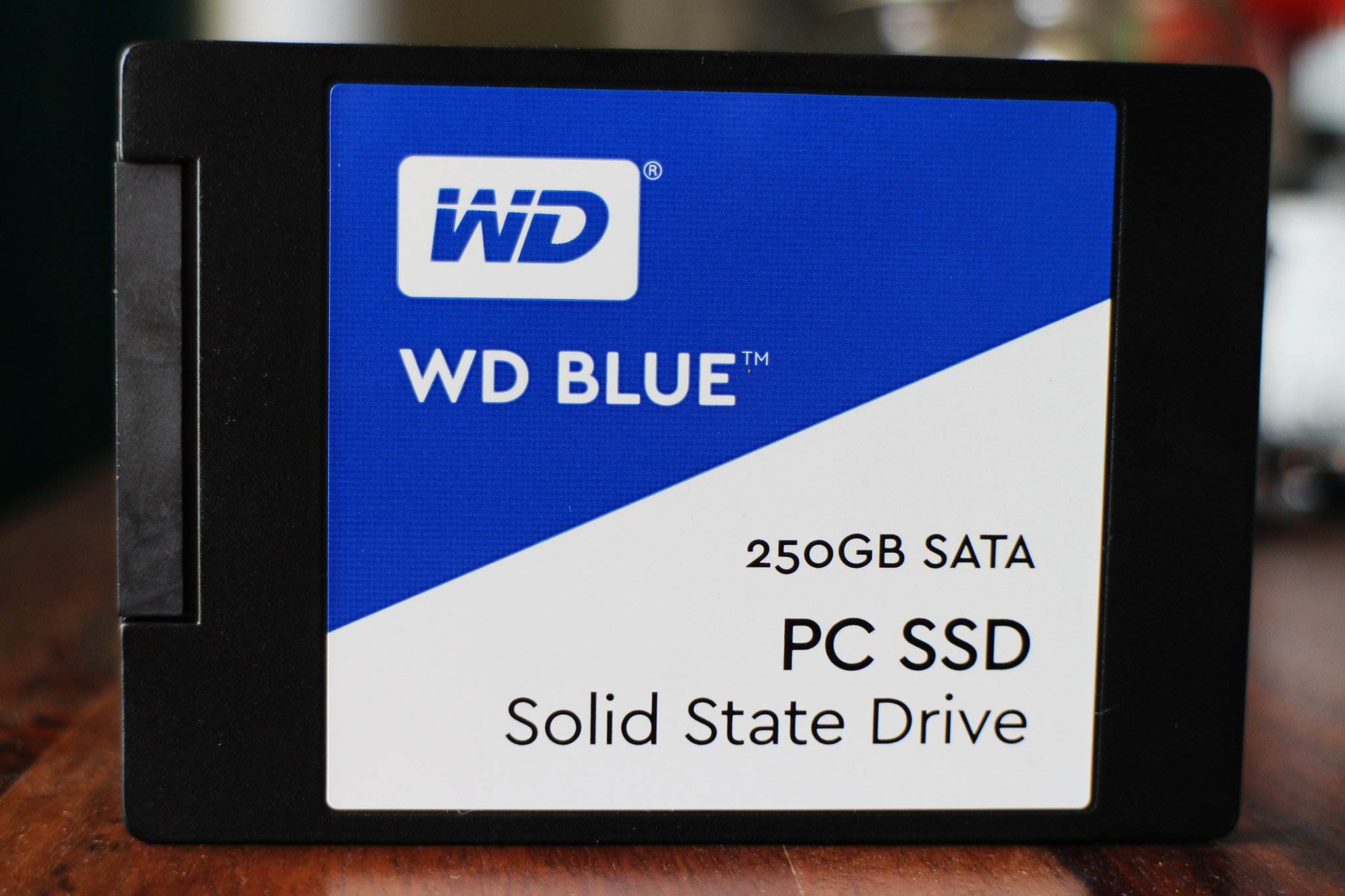Western Digital has set the standard for mechanical HDDs for over a decade now, but the brand failed to see the growing prominence of solid state drivers. Caught on the back foot, WD did what any manufacturer that needs to enter a new segment would do: acquire someone that already has extensive knowledge on the subject. So Western Digital went out and acquired SanDisk last year in a deal worth over $16 billion.
Doing so gave WD an entry into the SSD market, and access to SanDisk’s manufacturing facilities, and vast trove of patents. The result is the WD Blue SSD, Western Digital’s reentry into the SSD market following the disaster that was the SiliconEdge Blue. Time to find out if the WD Blue SSD fares any better.
WD Blue SSD specifications
- Capacity: 250GB, 500GB, 1TB
- Form factor: 2.5”, M.2 2280
- Interface: SATA
- Performance
- Sequential Read
- 250GB: 540MB/s
- 500GB, 1TB: 545MB/s
- Sequential Write
- 250GB: 500MB/s
- 500GB, 1TB: 525MB/s
- Random Read
- 250GB: 97K IOPS
- 500GB, 1TB: 100K IOPS
- Random Write
- 250GB: 79K IOPS
- 500GB, 1TB: 80K IOPS
- Sequential Read
- Endurance:
- 250GB: 100TBW
- 500GB: 200TBW
- 1TB: 400TBW
- MTTF: 1.75 million hours
- Warranty: 3-year
- Power
- Average: 70mW
- Maximum active: <4,400mW
- Operational and non-operational shock: 1,500G, 0.5ms half-sine
- Vibration
- Operational: 5gRMS, 10-2000Hz
- Non-operational: 4.9gRMS, 7-800Hz
- Temperature
- Operational: 0°-70° C (32°-158° F)
- Non-operational: -55°-85° C (-67°-185° F)
Overview
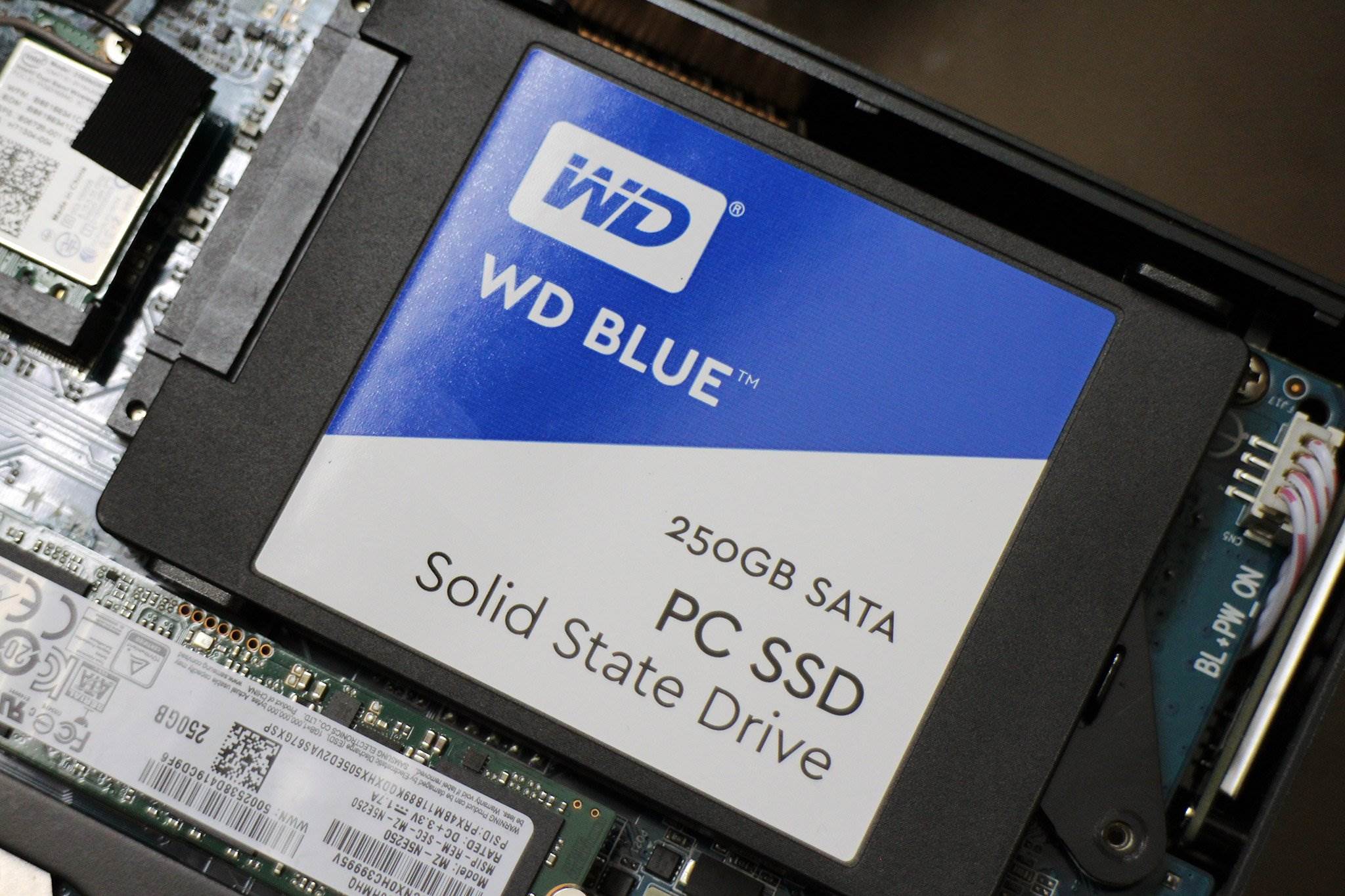
The front of the drive denotes the branding — in this case Blue — as well as the storage size. We’re testing the 250GB version of the drive, but it is also available in 500GB and 1TB variants. WD says that it is targeting enthusiasts and gamers with the Blue series, but the lack of a PCI-E solution means that it loses out to the likes of Samsung’s 950 Pro and 960 series. WD is also selling an M.2 variant of the SSD, but availability of that model varies based on the region.
The WD Blue SSD itself is based on SanDisk’s X400 drive, and uses SanDisk’s 3-bit per cell 15nm NAND along with a Marvell 88SS1074 controller and Micron DRAM. WD was able to eke out more performance and increase the longevity than what SanDisk managed with the X400, with the WD Blue SSD boasting sequential reads of 545MB/s and sequential writes of 525MB/s.
The WD Blue doesn’t offer encryption, but it does have a high endurance rating. For the 250GB variant we’re testing today, you’ll be able to write up to 100TB data over the drive’s lifecycle. That means if you were to write 50GB every single day, the drive will easily last over six years. The endurance rating is higher than what you’d get with a Samsung 850 Evo, which is rated for 75TBW (terabytes written) for the 250GB version.
Furthermore, WD is offering a 3-year warranty for its Blue SSDs, which isn’t quite the industry standard. Samsung has a 5-year warranty on all of its Evo products, and with the WD being only marginally more affordable than Samsung, this is likely to cause some consternation among potential buyers.
Then there’s the issue of software. The WD Blue SSD comes with SSD Dashboard, a rebranded edition of SanDisk’s SSD dashboard utility. The software has the exact same functionality, which in other words isn’t a whole lot.
Benchmarks
The WD Blue SSD is a known quantity as it is using the same internal hardware as the SanDisk X400. Here’s what the drive managed tin CrystalDiskMark:
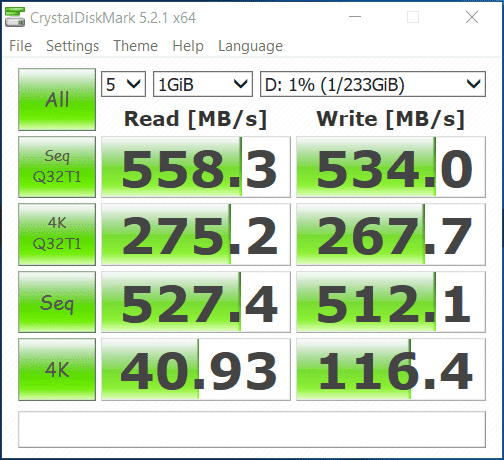
To put things into context, here’s the same benchmark running on a two-year-old Samsung Evo 840 250GB SSD:
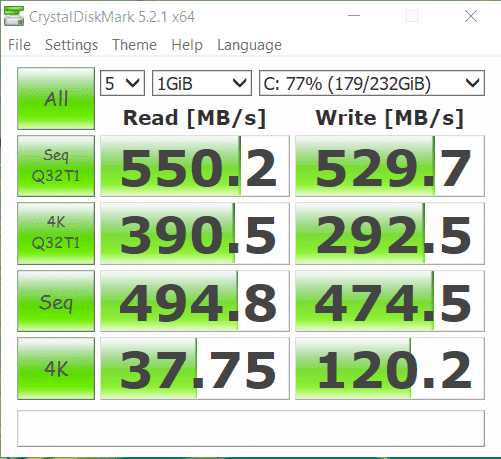
WD Blue comes out in front for sequential reads and writes, but doesn’t do that well at 4K reads or writes. The Evo 840 isn’t necessarily the latest from Samsung, so here’s how the WD Blue fares next to Samsung’s Evo 850 250GB SSD:
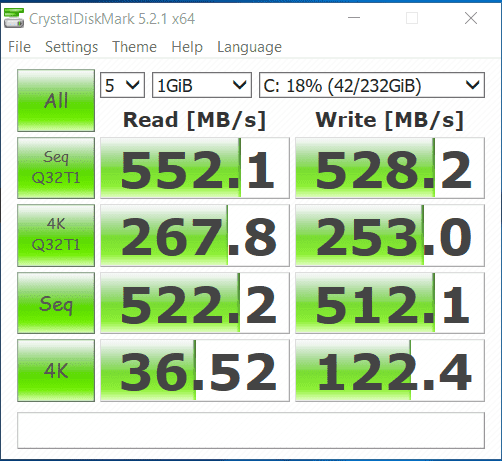
Next to Samsung’s latest, the WD Blue hold its own, and manages to do better at 4K and sequential reads and writes.
Verdict
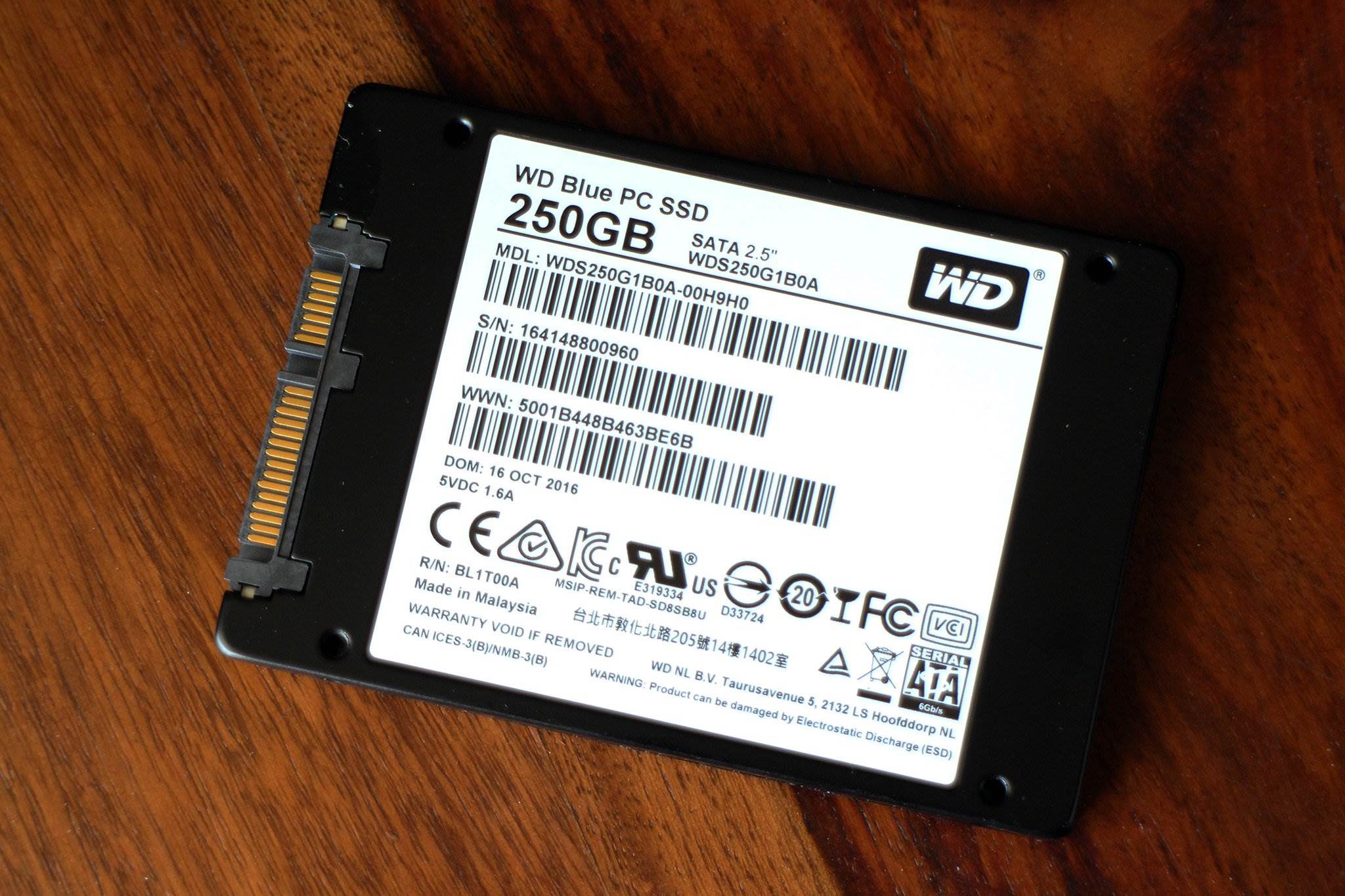
It’s easy to understand Western Digital’s motives for launching the WD Blue. With the hard drive market shrinking by 20% and entry-level SSDs swiftly gaining ground, it makes sense for hard drive makers like WD to target the segment. While earlier efforts from the likes of Seagate, Toshiba, and WD have failed to gain any attention, with the WD Blue SSD, it at least looks like WD will be able to break into this market.
That said, WD doesn’t bring anything new to the table with the Blue SSD. The underlying hardware is the same as that as SanDisk’s X400, with tweaks to the firmware and increased endurance. That has led to an increase in the cost, with the 1TB variant costing $299, a $70 premium over the 1TB X400. The warranty situation doesn’t also work in WD’s favor. With the Blue SSD, you’re essentially paying more for a drive that’s identical to the X400, but with a 3-year instead of the 5-year warranty offered by SanDisk.
However, SanDisk’s drives aren’t available in all global markets and are offered in limited storage variants, and that’s where WD is able to provide a tangible difference. By offering the WD Blue SSD in 250GB, 500GB, and 1TB variants, there’s more choice on offer if you go with WD’s native offering. Here’s the breakdown of where it’s a good bet to buy the WD Blue SSD:
Singapore
The 1TB version of the SanDisk X400 is available for SGD409 ($288) on Lazada, whereas the 1TB variant of the WD Blue SSD is up for sale for SGD468 ($330). If you’re looking to get the 1TB model, it obviously makes more sense to get the SanDisk 1TB. However, if you want the 500GB or 250GB versions, you’ll have to rely on the WD Blue. The 500GB version retails for SGD239 ($170), while the 250GB WD Blue SSD costs SGD129 ($90).
India
The SanDisk X400 isn’t available in India, so your best option if you want a 250GB drive is to get the WD Blue SSD, which is selling for ₹6,674 ($100) on Amazon India. That’s the online price, with the official retail price at ₹9,500 ($140).
With that out of the way, now it’s time to answer if you should actually pick up the WD Blue over the standout leader in this category, the Samsung Evo 850. Sure, Samsung’s SSDs cost even more than WD, with the 250GB Evo 850 costing SGD167 ($117) and ₹7,807 in India ($116). That said, the WD Blue SSD offers similar performance, and although the 3-year warranty is limiting, the increased endurace should make the drives last longer.

